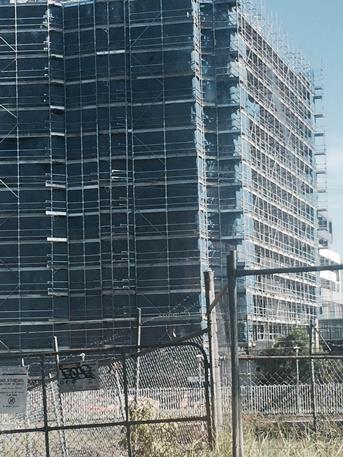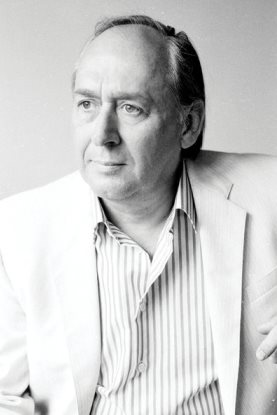Politics, Transcendence and the Corner Store
These days I find far too many people, who profess to be on the side against progressive politics and Cultural Marxism, only capable of dealing with the malady in terms of economics. I always risk being criticised for my ‘relevance’ when discussing culture. Of course, having discussions with people about how culture impacts on every day existence runs the greater risk of being dismissed as ‘petty’. I have decided to brave the chill winds blown from the desperate corridors of Establishment wisdom and confront people with the everyday folk wisdom of ‘home’ and how it is threatened by today’s ‘politics without transcendence’.
I live in a sleepy street in a (barely) middle class suburb that unscrupulous real estate agents seek to recruit into the trendy ‘inner-West’ district. Our neighbourhood looks out onto one of Sydney’s most notorious “suburbs of diversity”. My house is indeed perched upon the rim of a volcano. Whilst the mornings are still announced by a chorus of birdsong as opposed to the call of the muezzin, there are many reminders of the fact that we live in a kind of ‘no man’s land’ between two entrenched lines of control, ‘culturally speaking’.

Example of a residential development project in progress, Sydney 2016.
My home lies within a proposed ‘Urban Development Corridor’, a polite sounding term of city planning that is the stuff of dystopic nightmares. This plan, mimicked these days all over the Western World, is the basis upon which the state seeks to ‘rejuvenate’ the city and increase efficiency by completely rebuilding vast tracts of well-established domestic land. Of course rejuvenate means to knock down and rebuild everything with a much higher density of population, most of which will be imported from overseas. The project will be funded by the ‘Developer Dollar’ – the economic engine for this project is the profit margin of professional property speculators. Such developers are in the business of money making projects – not the construction of ‘homes’ or communities. They provide merely dwellings; whatever sells, whatever makes profits, whatever turns over the fastest sale. The state is quite content to hand over control of ‘rejuvenation’ to such a mechanism – in fact it has modified all necessary planning laws from approvals, to strata regulations to dramatic rezoning in order to allow it. Most disturbing of all – it has created a special ‘commission’ to ensure all goes smoothly and doesn’t involve the courts. It has even armed the commission with the power of compulsory acquisition of property for those stubborn types who would ‘rather die than sell’. This is social engineering on a truly massive scale and the big state at its most surreptitiously Orwellian.
What does all this have to do with the notion of politics and the transcendental? The notion of ‘home’ seems to be one for which the everyday person retains the capacity to think in transcendental terms – even quite irreligious people. It is also a facet of life in modernity undergoing great transformation, but interestingly, one in which many choose to defend these transcendental aspects of home in preference to the material aspects of dwelling. It is one aspect of life that the liberal economic machine is going to have a great deal of trouble overcoming without force, as the cry for endless growth is yelled louder and louder. In a society in which the economic order depends upon endless high consumption, high rates of work hours, less family time and a plummeting birth-rates – certain demographic realities will come home to roost, and one of the first manifestations of these realities will be the dramatic ‘re-creation’ of neighbourhoods literally from the ground up. This is the result of a ‘global outlook’ implemented by liberalism and its utopic dream of a ‘perfect order’ or at the very least ‘the end of history’.
The old adage ‘a man’s home is his castle’ encapsulates a notion traditionally considered critical to civilised living in the Anglosphere. The hyperbole in this metaphor makes explicit that the quality of home is transcendental and beyond material calculation. Tied up with this expression is an understanding of private right, personal liberty and individual expression, but also a notion of community. This is because the home is something that institutes order among one’s fellows. It establishes boundaries that in turn lead to markers of friendship and familiarity. When a home is shared, it is a signifier that those with whom it is shared have been admitted into a kind of sacred space.
The value placed on a home by its owner is idiosyncratic because it consists of memories, reflections, and aesthetic expressions quite particular to the makers of that home. They are things that quite simply cannot be measured in material terms. It is evident that Australians understand this – hence the popularity of the small independent film The Castle, which has now entered our popular folklore. If ever you give an Australian a present for Christmas, they smile and assure you “This is going straight in the pool-room” – fear not – you have done well. This clever film, that was all about the transcendental aspects of home, and defending them against a purely materialist political system, resonated with us all as a culture loudly and clearly.

Example of Victorian Era terrace house Sydney Australia, built in 1886.
It is obvious that many people derive comfort from living with stark reminders of their ancestors all about them. Why else would the Victorian mansions, Edwardian terraces and Federation Era bungalows be the most highly sought after real estate in Sydney and Melbourne’s trendiest areas? Outside of luxury waterfront properties – suburbs with this ‘old world charm’ are best sellers. Even when such dwellings are modified to accommodate certain modern conveniences or added to for additional room, there is something comforting about living in a house one of our ancestors would have called home. I think one of the reasons for this affection is that we are reassured in our daily struggles by the fact that those who dwelt before us did so under more trying circumstances than us – yet they seemed to make do. Of course there is an important and far more pragmatic reason too – these homes were built to last and they were built with features that testified to the importance of the transcendental things.
My particular house was built in 1927. It is mostly double brick, it has high ceilings, picture rails, hardwood floors and some stained glass windows. The ceilings are decorated with pressed metal – angelic and floral designs adorn them. This house was built for a railway worker, a labourer – not a professional. This house would have been considered “basic” when it was built. It suffers from all the various defects of its era – cheap mortar (more lime than cement), pier foundations (awful cracking on clay ground) and a side entrance blocking airflow during our 35 degree summers. Yet, in spite of these defects, it offers a distinct charm that is now highly sought after. Why? It is because when this house was made, certain aesthetic things mattered. Our bedroom has cherubs on the ceiling – a wonderful visage to close your eyes to when going to sleep. First thing in the morning – the sun’s rays are filtered through a stained glass variant of the cross. The bedroom carries the symbolism of peace, safety, sacredness – it is adorned with the transcendental. The house has picture rails because it is assumed that it will be filled with art and family memorabilia; the hardwood floors make us feel part of rather than removed from nature, the fireplace (many years disused), still maintains a presence and is functional in a sense beyond its intended utility. These are all features that people associated with the heritage of this country desire. In many ways they are quite English and I think that is a major part of their appeal – they remind some people of who they are.
Of course many modern houses, even multi-million-dollar mansions in the most exclusive suburbs, are made from the cheapest materials and possess no aesthetic features of the old world. The walls are so thin, leaning upon them is dangerous and the low generic ceilings are identical to the cheapest of public housing. Plastic, paint and plywood cover a multitude of sins. Marketing spin substitutes for standards.
There is a part of human nature that resists the purely utilitarian. I am reminded of Winston Smith’s first encounter with beauty for its own sake when he attends the “junk shop” and is entranced by the beauty of a paperweight made from coral preserved in a dome of glass. Orwell instructs us:
Winston immediately paid over the four dollars and slid the coveted thing into his pocket. What appealed to him about it was not so much its beauty as the air it seemed to possess of belonging to an age quite different from the present one. The soft, rain-watery glass was not like any glass that he had ever seen. The thing was doubly attractive because of its apparent uselessness, though he could guess that it must once have been intended as a paperweight.1
Here lies the stark warning that if we cease to care about the transcendental things and only the utilitarian, in the stifling ennui of the world that ensues, we may be deeply touched by the fact that something has a purpose beyond the material.

George Orwell (1903-1950)
I am under no illusions that slowly but surely fondness for such aesthetics is waning. As people become culturally deracinated, picture rails will give way to ‘big screens’, stained glass will give way to ‘energy efficient’ windows, and as for ornate ceilings – when they are barely 16 inches from your head – who wants the children touching the ‘pictures’? It is evident however, that these simple elements of home resonate with tremendous power. This came to light when the State government announced its plans to demolish thousands of these homes across a wide range of suburbs and replace them with high density units. Suddenly the politically correct, establishment class of the inner-West became enraged – ‘how dare they!’
I attended a community meeting that was full of enraged residents, I had never seen a meeting so well attended and energetic in the area. Interestingly, the overwhelming demographic was concerned baby boomer Anglo-Saxons. Now that their homes were threatened, they had a sudden vehement objection to change and diversity. They weren’t concerned about the material matters. They may find themselves handsomely paid by developers – they may even make lots of money, but none of it seemed to matter anymore because they were going to lose their homes and communities. They were going to be razed to the ground en masse. They made various rational arguments about services, transport, massively increased population but in the end it kept coming back to the fact that it was their aesthetic and culture that had been challenged by the State. What they didn’t want to lose was that thing that had no tangible value – that you simply can’t put a price upon. To be able to have a garden, to have quirks and eccentricities around you, to have paths that weren’t even, and windows that creaked; to have lights in that bush on the corner at Christmas; to have the ability to affect your environment without needing permission from a body corporate meeting. In short – they actually cared most about the transcendental things.

Yevgeny Zamyatin (1884-1937)
They realised however that their political class did not. To them it was all about efficiency. They wanted a huge increase in population to fund new private rail systems. Political advantage masqueraded as ‘progress’ as they constructed new electorates with a changed ‘political alignment’. New transport systems without workers (and therefore trade unions) that could be managed by overseas contractors were disguised with talk about ‘inevitable’ and ‘necessary’ changes for the future. No one actually paused to ask why, in a country with a falling birth-rate, urgent measures had to be taken for massive surges in population growth that involved the mass demolition of thousands of homes that most people loved. These people were being displaced and they knew it, but they didn’t want to admit it. Like frightened ostriches, they believed that their usual response to community concerns – a petition, a stern letter in the local paper – would take effect and solve the problem. The reality is slowly sinking in however – the political cares not for the transcendental. Within ten years their opinion will not matter. They will all be replaced by a more compliant and grateful population for whom ‘home’ has an entirely different meaning.
The ‘community’ by design that will replace the organic one will not resemble the old one even in terms of its shell. Cheap, quickly built, functional, high density housing designed to be purely efficient, and not the least bit aesthetic, will form the catacombs into which the new hive of beings will be established. The concrete, capsular concourses that will replace open verdant streets will be an intermediate step toward the architecture of Zamyatin’s We:
Blue, untainted by a single cloud (the Ancients had such barbarous tastes given that their poets could have been inspired by such stupid, sloppy, silly-lingering clumps of vapour). I love – and I’m certain that I’m not mistaken if I say we love – skies like this, sterile flawless! On days like these, the whole world is blown from the same shatterproof, everlasting glass as the glass of the Green Wall and of all our structures. On days like these, you can see to the very blue depths of things, to their unknown surfaces, those marvellous expressions of mathematical equality – which exist in even the most usual and everyday objects.2

Kurt Vonnegut (1922-2007)
Like all planned experiments, the concrete deviates dystopically from the abstract. There are plenty of examples for people to learn from dotted all over the city. Once touted as the ‘future of living’, the now dilapidated projects stand like tombstones – monuments to the failure of inorganic schemes, devised by experts and used by the political classes to fund themselves out of trouble. Yet people never seem to learn – neither the political class nor those who keep guaranteeing their positions. This brings us to the fundamental issue – the fact that the community, even the educated community, has become so somatised that they keep empowering the very political classes that betray them. At the community meeting I attended to protest against the project, politicians spoke as if they were saviours of the people. Community activists presented papers carefully explaining how scores of pieces of legislation had been carefully and slowly enacted to allow the Urban Development Corridor project to go ahead. Yet, with the very politicians in the room who had ensured that this process had now reached such a momentum that it was unstoppable, they sat like lambs. Why were these politicians not only unafraid to attend the meeting, but actually organised it and sat as chair? Because they knew that even though they have been willing participants in the process, by offering some futile resistance at the last minute the citizens would lap in up. People do not want to face the harsh realities, they’d rather pretend that it isn’t happening. They want to defer responsibility whenever they can. They don’t want to make sacrifices or deviate from their life’s routine – even for the sake of its preservation. All a politician has to do is to package absolution with the right words and the citizen will walk to his own destruction believing that ‘I did all I could do – I must now accept my fate’.
The message to take away from all this is that in order to protect transcendental things, people must be prepared to make sacrifices for them. When people feel that they have nothing left to lose – because they have no job, no house, no money – then they will do extraordinary things to protect themselves. Unfortunately, whilst people become alarmed at the prospect of the transcendental aspects of home being removed, they are just too comfortable to be prepared to do anything about it. Their incomes and bellies are not threatened – in fact they get a nice pay-out for their extinction. So long as people are prepared to place their comfort ahead of their meaning, then the political class has them on a string, and they can continue to ignore any of the transcendental aspects of home. The political class has a vested interest in eliminating the transcendental and reducing all facets of life to the purely functional. The danger of too much comfort is a realisation that comes to Dr Paul Proteus in Kurt Vonnegut’s Player Piano. The faux-colonial decoration of his home allows his imagination at least to consider life without comfort:
[…] he brought home a bear to Anita, and she cleaned it and salted it away, he felt a tremendous lift – the two of them winning by sinew and guts a mountain of strong red meat from an inhospitable world. And he would mould more bullets, and she would make more candles and soap from the bear fat, until late at night, when Paul and Anita would tumble down together on a bundle of straw in the corner, dog-tired and sweaty, make love, and sleep hard until the brittle cold dawn […]3

Richard Weaver (1910-1963)
He is snapped back to reality by the whirring of the domestic machines of convenience. To make his fantasy a reality requires a particular kind of nerve that he does not yet possess. Yet, at the same time, the mere contemplation of his fantasy is enervating.
Richard Weaver warned of the result of “soft living” in Ideas Have Consequences. The need for dynamism will conflict with soft living requiring the liberal state to focus its resources upon technocratic bureaucracies to keep internal order. The consequences of managed, high density living will most definitely be reflected in the political order with the course of time. The soulful ‘work’ involved in maintaining one’s domicile culture is being eliminated in the name of ‘more efficient’ living, and even the tradesman is reduced to removing and replacing plastic snap on/off parts and motherboards as opposed to actually fixing or crafting something. Weaver offers a stark warning to those who would indulge such a future:
A hundred years ago, more or less, when men built houses to live in themselves, they were constructing private property. The purpose was one to be honoured, and they worked well, with an eye at least to the third generation. This is a simple instance of providence […] A century and a half goes by, and they are both habitable and attractive. Let us look next at the modern age, in which houses are erected by anonymous builders for anonymous buyers with an eye to profit margins. A certain trickiness of design they often have, a few obeisance to the god of comfort; but after twenty years they are falling apart. They were never private except in a specious sense; no one was really identified with them. Thus our spiritual impoverishment is followed by material impoverishment, in that we are increasingly deceived by surfaces.4
What would Weaver say now in the face of the ‘urban development corridors’ that the political class plans to have criss-crossing our city, scaring the domestic environment like a slave’s well whipped back? Towers of box like units, cascading down in height order, ziggurat termite mounds erupting in scores of suburbs, the skyline blistered with crass concrete where invigorating vistas once stood.

James Graham Ballard (1930-2009)
At the conclusion of the process – dystopia awaits. J. G. Ballard captured the process in his novel Highrise. The attempt to plan and perfect human nature fails spectacularly in this story of ‘vertical communities’ gone wrong. They descend into the primitive chaos that clearly reminded Ballard of his time as a boy in a Japanese internment camp. The residents continued their pretence of normality to the outside world as their increasingly dysfunctional private domestic arrangements gave way to the worst of human depravities. Throughout it all Ballard reminds us of man’s false hubris. Since Nimrod first launched his tower into the sky our folk wisdom has warned us of the dangers of man becoming his own god. What start out as ‘brilliant ideas of progress’ soon fall if they aren’t guided by transcendental values, and in my urban context, the people’s instincts still grasp these values – but they lack the courage, the nerve, to confront the material political classes. As long as the politicians are convinced that the people will always opt for comfort and the path of least resistance, then the smouldering transcendental values will inevitably be extinguished.
I leave the final word to Ballard who tells us:
The high-rises seemed almost to challenge the sun itself – Anthony Royal and the architects who had designed the complex could not have foreseen the drama of confrontation each morning between these concrete slabs and the rising sun. It was only fitting that the sun first appeared between the legs of the apartment blocks, raising itself over the horizon as if nervous of waking this line of giants. During the morning, from his office on the top floor of the medical school, Liang would watch their shadows swing across the parking-lots and empty plazas of the project sluice-gates opening to admit the day. For all his reservations, Liang was the first to concede that these huge buildings had won their attempt to colonise the sky.5
… but when the perfection unwinds, and the first residents corrupt their Eden, chaos descends. Few survive, Liang is one. The now twisted and maniacal man sits upon the tower roof, ready to feast upon some roast dog:
Dusk had settled, and the embers of the fire glowed in the darkness. The silhouette of the large dog on the spit resembled the flying figure of a mutilated man, soaring with immense energy across the night sky, embers glowing with the fire of jewels in his skin.
Liang looked out at the high-rise four hundred yards away. A temporary power failure had occurred, and on the 7th floor all the lights were out. Already torch-beams were moving about in the darkness, as the residents made their first confused attempts to discover where they were. Liang watched them contentedly, ready to welcome them to their new world.6
– Luke Torrisi is a retired legal practitioner and now an academic researcher and host of Carpe Diem, Sydney’s only explicitly Traditionalist and Paleoconservative radio programme broadcasting on 88.9FM, between 8:00 to 10:00pm, Mondays. His contribution to last year’s Symposium (“quo vadis conservatism, or do traditionalists have a place in the current party political system?”) was titled “Don’t Mention the War! Conservatives’ Forgotten Role”.
Endnotes:
- George Orwell, Nineteen Eighty-Four (London: Penguin, 1974) p. 80. Emphasis added.
- Yevgeny Zamyatin, We (London: Vintage, 2007) p. 5.
- Kurt Vonnegut, Player Piano (New York: The Dial Press, 2006) p. 111.
- Richard M Weaver, Ideas Have Consequences (Chicago: University of Chicago Press, 2013) pp.129 -130.
- James Gareth Ballard, Highrise (New York: Liveright, 2012) p.27.
- Ibid. p. 207.
Citation Style:
This article is to be cited according to the following convention:
Luke Torrisi, “Politics, Transcendence and the Corner Store” SydneyTrads – Weblog of the Sydney Traditionalist Forum (30 April 2016) <sydneytrads.com/2016/04/30/2016-symposium-luke-torrisi> (accessed [date]).






I am a native Angeleno who grew up in and around Los Angeles until I left California altogether at age thirty-five in 1989. Before 1980 there were still in evidence in the Los Angeles Basin many pockets of what I might call “Classical Los Angeles” – remnants of the period between 1880 and 1940, approximately, when the actual downtown was a metropolis of human scale, with pleasant architecture, attractive shops, and good eating, surrounded by its original immediate suburbs, each of which could legitimately be called a neighborhood. There were multistory buildings, but nothing that would have qualified as a Manhattan-style skyscraper. The expansion of the downtown, the growth of the formerly outlying civic centers, and the influx of massive new populations – these merging processes began just after the Second World War, but in the 1960s and 70s they had not quite swallowed up the livable city. Around 1980, however, a tipping point had been reached, and the quaint remnants of the old city swiftly vanished into the all-absorbing urban monstrosity that had begun to rival the megalopoleis of the USA’s eastern seaboard.
The transformation shocked and horrified me: What most people saw as inevitable and wealth-producing “growth,” I saw as the ruination of what had once been a nice place to live. Truly, the almighty dollar in concert with the weird policies of the increasingly multicultural Left, which by that time controlled the city as well as the state, had blighted and dehumanized a whole region stretching from the extreme reaches of the San Fernando Valley inland and Malibu along the coast to merge with the conjoined cities of Orange County in the other direction. The image of Nimrod’s tower is about the only way of representing the “new order,” except that in the case of Los Angeles it would be tens of thousands of Babylonian towers imposing themselves all at once.
I was moved by the story of Sydney’s similar transformation in your finely crafted history of that city’s human ecology.